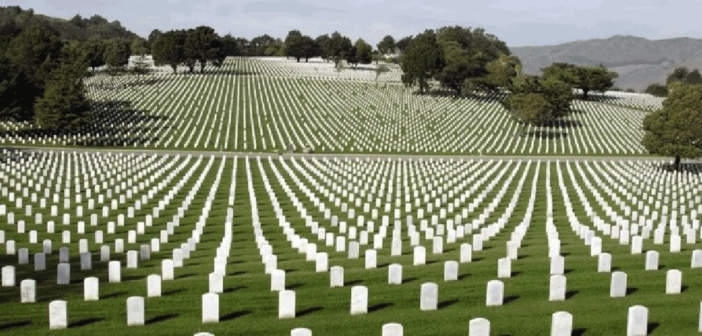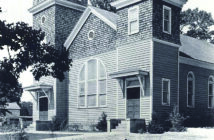Retired Army Maj. Gen. Merdith W. B. “Bo” Temple spoke to the Chester Lions about Arlington National Cemetery on Sept.12.  The story was quite interesting for the club members. The following is a summary of its history shared by Temple and recorded by Lions Club member Carelyn Steele Sheppard.
The story was quite interesting for the club members. The following is a summary of its history shared by Temple and recorded by Lions Club member Carelyn Steele Sheppard.
During the 17th century, the Custis family lived on the Eastern Shore in Northampton County, Va., where John Custis built a house he named Arlington. His great grandson, Daniel Parke Custis, married Martha Dandridge in 1749 and left her a widow with two small children in 1757. In January 1759, Martha married George Washington and moved with her children Patsy and John Parke Custis to Mount Vernon. In 1778, J.P. Custis acquired 1,100 acres of land which would later become Arlington. The property stretched along the Virginia side of the Potomac River. At the time of his death in 1781, the property transferred to his infant son, George Washington Parke Custis. He took possession of the property and in 1804 began construction of Arlington House – named such as homage to the ancestral home– on a hill overlooking Washington, D.C.
Because of the hilly topography, Custis was not able to farm crops on the estate. He, therefore, raised sheep and opened the property to tourists. Even though neither endeavor proved to be financially profitable, the home became a haven of artifacts related to George Washington. Mary Anna Randolph Custis married Robert E. Lee in the parlor at Arlington House in 1831. Custis remained there until his death in 1857. Lee took a leave of absence from the Army to help manage the property from 1858 to1860. According to Custis’s will, all of the slaves were to be released when the estates bill had been paid or after five years, which Lee did in 1862.
The Lee household moved to Richmond at the beginning of the Civil War. Within a month, Federal troops moved into Arlington House. The government ordered Mary Lee to appear in person to pay all of the taxes on the property. Needless to say, she did not. The federal government purchased the property at auction for burial space since the District of Columbia had very little space remaining. They also built several forts nearby to protect Washington. After Mary Lee’s death, her eldest son, George Washington Custis Lee, took legal action regarding the property. The property was returned by the U.S. Supreme Court in 1882 and subsequently purchased by Congress in 1883.
In 1920, the Memorial Amphitheater was built, and the next year the first unknown soldier was buried there. Congress established Arlington House to be a memorial for Robert E. Lee in 1925 and directed the Army to refurbish the house. Fortunately, there were a number of elderly slaves and others who brought artifacts back to Arlington House and told them how the home had been decorated. In addition to telling where pieces of furniture were, they explained how various rooms and things had been used. The first-hand stories and knowledge of the home and property enrich our knowledge and understanding of the property and times.
Arlington is an honored final resting place for deceased veterans. There are veterans from the Revolutionary War to present day. Of the 7,000 burials each year, a little less than half are ceremonial.


